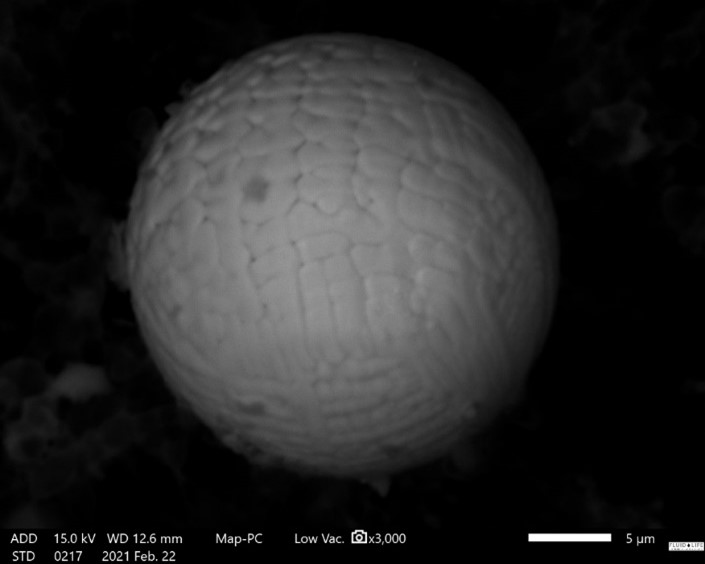By Craig Winterfield
Spherical particles (spheres) can act as an early warning sign of outside contamination, bearing fatigue and abnormal wear. Early identification of the presence and source of spheres helps you to:
- Make informed decisions,
- Schedule actions (e.g., review, monitor or repair), and
- Minimise unplanned downtime and costly repairs.
Sources of Spherical Particles
There are several possible sources that can create spheres including:
- Wear modes such as fatigue wear or sliding wear
- Electrical discharge erosion
- Lubricant degradation: “Oil Balls”
- Outside contamination including welding, grinding, cutting and fly ash.
Figure 1: Rolling-contact fatigue wear generation of spherical particles

Regardless of the source, spheres can be abrasive and cause secondary wear.
Detecting Spheres
Large diameter spherical particles are invisible to spectrometry-based oil analysis programs since ICP/AE Spectrometers are insensitive to particles >10um. Other large particle techniques such as Analytical Ferrography, can image and provide an indication of the size of spheres, but cannot determine the elemental composition.
This image is of bearing grease from the pedestal bearing of a large mining shovel. The sample was prepared on a ferrography slide and photographed at 200x magnification. Note the presence of spheres as well as cutting wear.

Scanning Electron Microscopy-Energy Dispersive X-ray Spectroscopy (SEM-EDS) however, can determine the size, shape and composition of wear particles and contamination including spheres. Contamination spheres generated by welding/grinding/cutting debris and spheres caused by lubricant degradation can be differentiated using SEM-EDS from small diameter spheres more commonly associated with bearing wear.
The following image is an SEM micrograph showing a single sphere from a sample of used engine oil. Primarily composed of Fe. 26.33um diameter.

What you can do if spheres are detected
Since contamination spheres are abrasive, if detected by SEM-EDS analysis, you should consider acting before secondary wear occurs. Actions that that can be taken include:
- Inspection of filters and change if necessary.
- Drain, flush, and refill the oil.
- Take a new oil sample at a shortened interval to verify the contamination has been eliminated.
With the presence of small diameter spheres, actions that may be required include:
- Inspection of the component.
- Drain, flush, and refill the oil.
- Take another sample at a shortened interval to verify if the spheres are still present.
- Perform SEM-EDS on both the oil and filter to check for signs of bearing wear and abnormal wear of other components.
To incorporate SEM-EDS analysis into your oil analysis program, contact us.